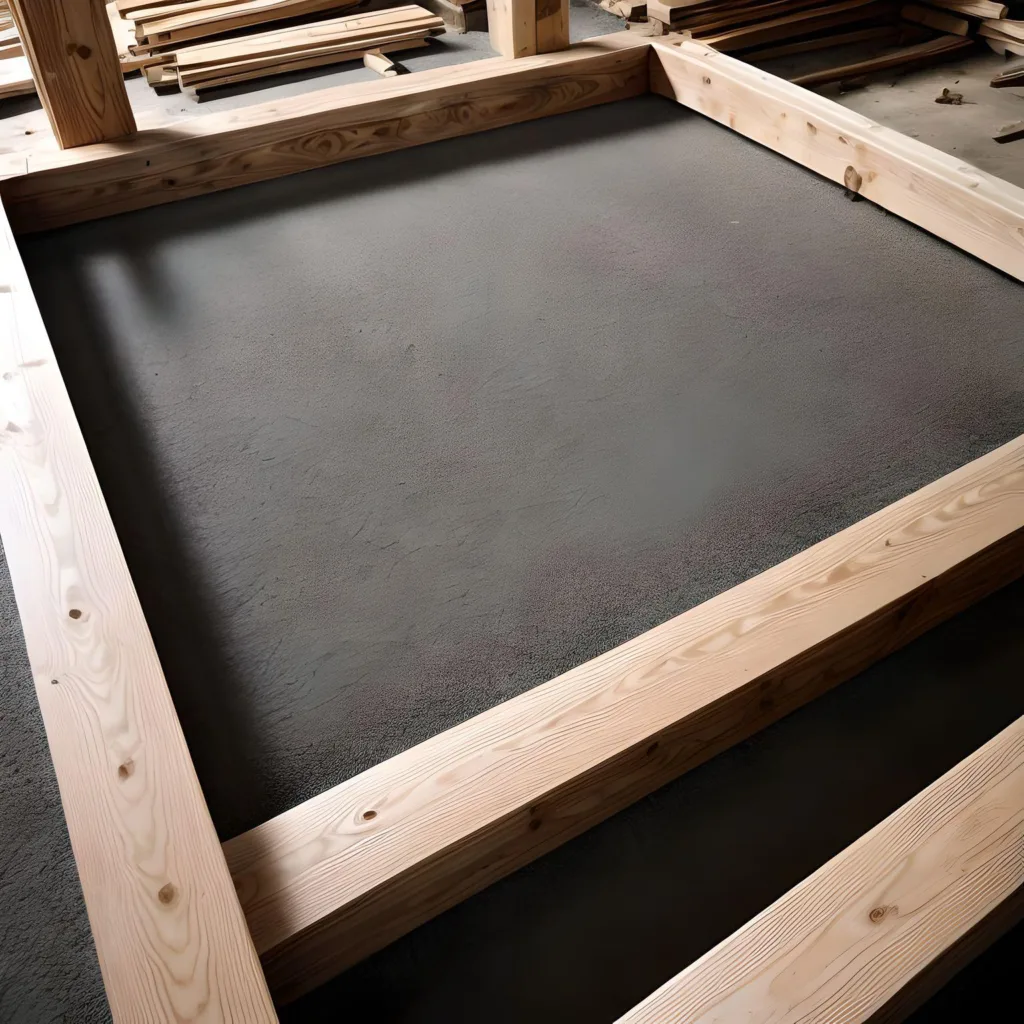Are you considering adding a door to the wall of your home? Framing a wall with doors can be a complicated process, but with the right tools and knowledge, it can also be a rewarding and achievable DIY project.
In this blog post, we’ll guide you through the step-by-step process of framing a wall with a door, as well as provide you with valuable insights, tips, and explanations.
Gather Your Tools and Materials
Before you start framing, it’s crucial to ensure you have all the necessary tools and materials. Here’s a list of items you will need:
- Measuring tape
- Level
- Hammer
- Nails or screws
- Stud finder
- Wood studs
- Door frame kit
- Saw
- Safety goggles
- Safety gloves
Once you have gathered these tools and materials, you’re ready to begin framing your wall with a door.
Measure and Mark
The first step in framing a wall with a door is to measure and mark the desired location of the door. Use a measuring tape to determine the height and width of the door, and mark the outline on the wall. Make sure your measurements are accurate and level.
Next, use a stud finder to locate the studs in the wall. This will help you determine where the frame will be anchored. Mark the stud locations on the wall, as this will be essential when attaching the door frame later.
Frame the Opening
Once you have marked the door’s location and the stud positions, it’s time to frame the opening. Start by cutting the top plate and bottom plate to the desired length for the door frame. Make sure they are level and secure them to the ceiling and floor respectively, using nails or screws.
Next, cut the studs to the height of the door frame, minus the height of the top and bottom plates. Space the studs evenly along the top and bottom plates, ensuring they align with the marked stud locations on the wall. Secure the studs to the plates using nails or screws.
Install the Door Frame
With the opening frame, it’s time to install the door frame. A door frame kit can simplify this process and ensure a professional finish. Follow the manufacturer’s instructions to assemble and install the door frame within the framed opening. Use a level to ensure the frame is plumb and level before securing it in place with nails or screws.
Hang the Door
Once the door frame is securely in place, it’s time to hang the door. Remove any packaging from the door and carefully position it within the frame. Insert hinge pins into the hinges and check for smooth operation. Make any necessary adjustments to ensure the door swings freely and closes properly.
Attach the door handle and latch mechanism according to the manufacturer’s instructions. Test the door to ensure it opens and closes smoothly.
Finishing Touches
To complete the framing of the wall with a door, it’s essential to add finishing touches. Fill any gaps or holes with wood putty or filler material, and sand the surfaces until they are smooth and even. Prime the wood surfaces and apply a coat of paint or stain to match the surrounding wall.
Don’t forget to install trim around the door frame for a polished look. Measure and cut the trim pieces, then attach them using nails or adhesive. Fill any nail holes and seams with wood putty, sand, and paint the trim to match the door and surrounding wall.

How much does it cost to build a wall with a door?
The cost of building a wall with a door can vary widely depending on several factors, including:
- Materials: The type of lumber, sheathing, and surface materials you use will significantly impact the cost. Different wood species and quality levels come at different prices.
- Door and Hardware: The cost of the door itself, along with the door hardware (knob, hinges, latch), can vary greatly based on the door’s material, design, and brand.
- Tools: If you don’t already own the necessary tools, you’ll need to factor in the cost of purchasing or renting tools like a circular saw, framing square, drill, and safety gear.
- Labor: If you hire professionals to build the wall and install the door, labor costs will be a significant portion of the total cost.
- Location: The cost can also vary by location and local labor and material prices.
- Optional Features: Any additional features, like insulation or special finishes, will add to the cost.
- Size and Complexity: The size of the wall and the complexity of the project, such as adding electrical wiring, will also influence the cost.
To get an accurate cost estimate, it’s best to consult with local contractors, obtain quotes for materials, and factor in any additional expenses.
Can I put a doorway on a wall?
Adding a door to a wall is a common practice in construction and renovation. It involves careful planning, precise measurement, and installation of a door frame, door jamb, and associated hardware.
Following specific steps, such as cutting an opening, preparing the door, and hanging the door, allows access points to be created between rooms or areas within a building. It’s important to follow local building codes and regulations and to consult professionals for more complex projects.
How to Frame a Door in a Passageway?
Steps to Frame a Door in a Passageway:
- Plan: Determine the location of the door in the passageway. Measure the width of the door frame kit to ensure it fits the desired opening.
- Measure and Mark: Measure the door frame kit’s width and mark the center point of the passageway on the top wall plate. This is where the door frame will be positioned.
- Cut the Opening: Use a circular saw to carefully cut the opening for the door frame. Ensure it is level and plumb. Cut both the top and bottom wall plates and the adjacent studs.
- Header Installation: Add a horizontal header above the opening. The header provides structural support. Secure it between the adjacent studs using nails or screws.
- King Studs: Place vertical king studs on each side of the opening. These king studs support the door frame and provide structural integrity.
- Top Plate and Sole Plate: Install a top plate at the top of the opening and a sole plate at the bottom. These plates should be securely fastened to the king studs, header, and wall studs.
- Frame the Door: Follow the manufacturer’s instructions to assemble and install the door frame kit. Make sure it fits snugly within the framed opening.
- Door Installation: Hang the door slab in the frame, attaching it to the hinges provided in the frame kit. Ensure the door is level and plumb.
- Door Hardware: Attach the doorknob, hinges, and latch to the door according to the manufacturer’s instructions.
- Insulation (Optional): If you want to insulate the wall, add insulation between the studs.
- Cover the Wall: Use sheathing material like drywall or plywood to cover the framed wall. Finish with your preferred surface material.
- Finish: Complete the wall by painting, texturing, or decorating as needed.
Conclusion
Framing a wall with a door can seem daunting at first, but by following these step-by-step instructions, you can confidently take on this DIY project. Remember to gather the necessary tools and materials, measure and mark the opening, frame the wall, install the door frame, hang the door, and add the finishing touches.
As with any DIY project, it’s important to prioritize safety and wear protective gear such as safety goggles and gloves. If you feel uncertain or overwhelmed at any point, it’s always wise to consult a professional or seek guidance from experienced individuals.
Now that you have the knowledge to frame a wall with a door, go ahead and transform a space in your home, adding functionality and aesthetic appeal. Enjoy the process and the satisfaction of completing a project that enhances both the value and livability of your home.
People also ask
- Can you put a door in a structural wall?
- Yes, you can install a door in a structural wall. However, it’s essential to ensure that the wall is properly reinforced and framed to accommodate the door while maintaining the structural integrity of the wall.
- What connects a door to a wall?
- A door frame kit, which consists of jambs, a head jamb, and a threshold, connects a door to a wall. The door frame surrounds the door slab, providing structural support and a secure fit within the wall.
- How do you frame a door in a load-bearing wall?
- Framing a door in a load-bearing wall involves installing a header above the door opening to distribute the weight of the wall and any loads above it. Vertical king studs on each side of the door provide support. Consult a structural engineer or building professional to ensure proper framing in load-bearing walls.
- How do you frame a wall that is not load-bearing?
- Framing a non-load-bearing wall typically involves creating a simple frame for the opening. It may not require a structural header. The wall serves as a partition and doesn’t support the structure above. Consult local building codes for specific requirements.
- How do you know if a wall is non-load-bearing?
- To determine if a wall is non-load-bearing, you can check the construction plans, consult a structural engineer, or observe the presence of other load-bearing walls or columns that support the structure. Load-bearing walls often run perpendicular to floor joists, while non-load-bearing walls usually run parallel to them.

